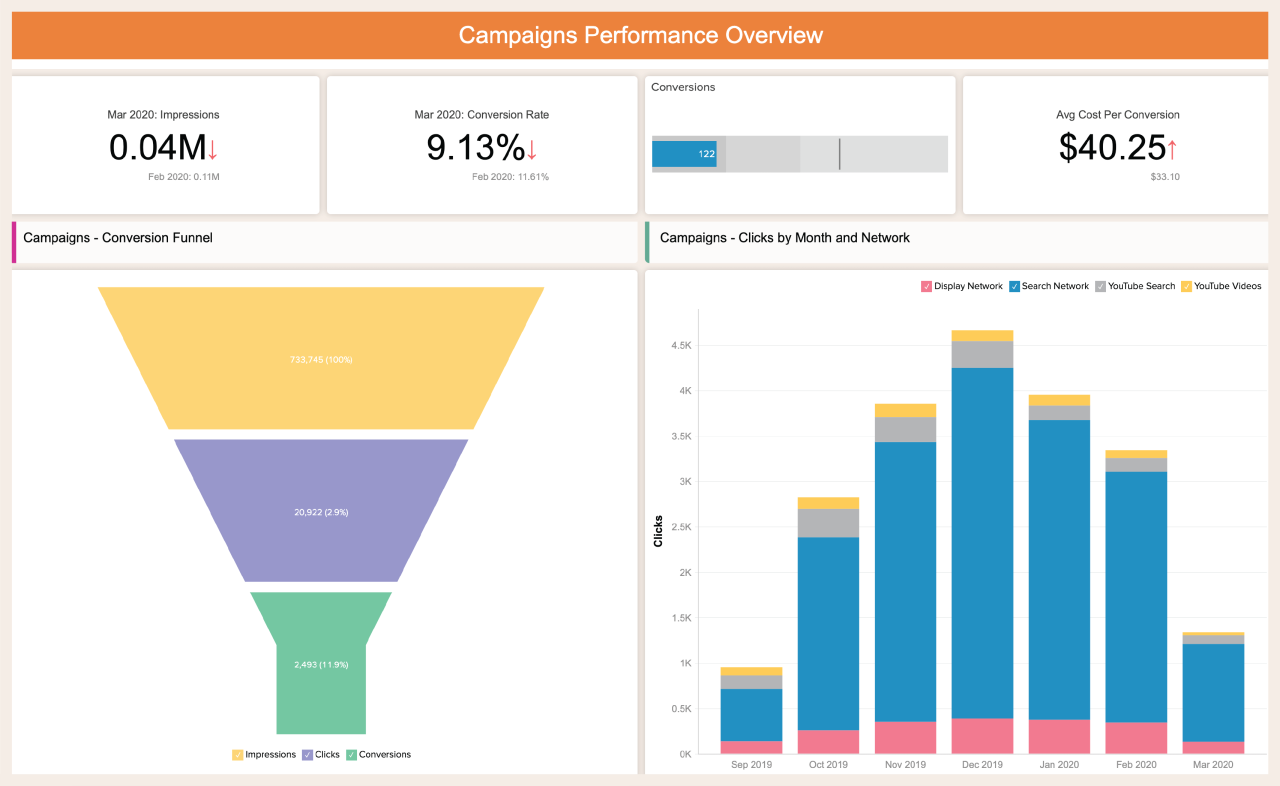Social Media Advertising Costs
Social media advertising costs take center stage in the digital marketing landscape, offering businesses a unique opportunity to reach their target audience. Understanding the intricacies of these costs is crucial for optimizing ROI and achieving marketing success.
In this comprehensive guide, we’ll delve into the factors that influence social media advertising costs, compare costs across popular platforms, explore strategies to optimize expenses, and analyze trends shaping the future of advertising expenditure on social media.
Factors influencing social media advertising costs
In the realm of social media advertising, several factors play a crucial role in determining the costs associated with running effective ad campaigns. Let’s delve into the key influencers that can impact social media advertising expenses.
Targeting Options
When it comes to social media advertising costs, targeting options can significantly affect the overall expenditure. The more specific and refined your target audience is, the higher the cost of reaching them through ads. Advanced targeting options that allow you to narrow down your audience based on demographics, interests, and behavior can lead to increased costs but potentially higher conversion rates.
Ad Format
The type of ad format you choose can also impact the cost of your social media advertising. Video ads tend to be more expensive than static image or text-based ads due to their engaging nature and higher production costs. Additionally, interactive ad formats like carousel ads or augmented reality experiences may come with a premium price tag but can offer better engagement and results.
Industry Competition
The level of competition within your industry on social media platforms can influence advertising costs. In highly competitive industries where multiple businesses are vying for the same audience’s attention, the cost per click or impression can increase. It’s essential to monitor your competitors’ advertising strategies and adjust your budget accordingly to stay competitive without overspending.
Audience Size
The size of your target audience on social media can also impact advertising costs. A larger audience may require a higher budget to reach effectively, especially if you aim to achieve a significant reach and frequency. On the other hand, a smaller, niche audience may be more affordable to target but could limit your overall campaign reach.
Seasonality and Trends
Seasonal factors and current trends can have a notable impact on social media advertising expenses. During peak seasons or trending moments, the competition for ad space increases, leading to higher costs. Adapting your strategy to align with seasonal trends or capitalizing on viral topics can be beneficial but may require adjusting your budget to accommodate the fluctuating ad costs.
Comparison of costs across popular social media platforms: Social Media Advertising Costs
When it comes to advertising on social media, it’s essential to consider the costs involved on different platforms. Let’s compare and contrast the advertising costs on popular social media platforms like Facebook, Instagram, Twitter, LinkedIn, and Snapchat to help you make an informed decision.
Facebook is one of the most popular social media platforms for advertising due to its large user base. The cost per click (CPC) on Facebook can range from $0.50 to $2.00, while the cost per mille (CPM) rates are typically between $5 and $10. Investing in Facebook advertising can be cost-effective due to its advanced targeting options and high engagement rates.
Instagram, owned by Facebook, is another popular platform for advertising, especially for visually appealing content. The CPC on Instagram is similar to Facebook, ranging from $0.50 to $2.00, with CPM rates between $5 and $7. While Instagram can be a bit more expensive than Facebook, it offers a highly engaged user base, particularly among younger demographics.
Twitter is known for its real-time updates and trending topics, making it a unique platform for advertising. The CPC on Twitter is generally higher, ranging from $1 to $2, with CPM rates between $6 and $9. While Twitter advertising can be more costly, it allows for quick and targeted reach, especially during live events or trending conversations.
LinkedIn is a professional networking platform that is ideal for B2B advertising and targeting specific industries or job titles. The CPC on LinkedIn is higher compared to other platforms, ranging from $5 to $10, with CPM rates between $6 and $12. Investing in LinkedIn advertising can be more expensive, but it offers precise targeting options for reaching a professional audience.
Snapchat
Snapchat is popular among younger audiences for its disappearing content and interactive features. The CPC on Snapchat can range from $1 to $3, with CPM rates typically between $8 and $12. Advertising on Snapchat can be more expensive, but it provides opportunities for creative and engaging ad formats, particularly for brands targeting younger demographics.
Consider these cost comparisons across different social media platforms to determine the best fit for your advertising goals and budget.
Strategies to optimize social media advertising costs

In today’s competitive digital landscape, businesses need to find ways to optimize their social media advertising costs to maximize their return on investment. By implementing smart strategies, businesses can reach their target audience effectively without breaking the bank.
Importance of A/B testing
A key strategy to optimize social media advertising costs is through A/B testing. By running multiple versions of an ad to see which performs better, businesses can make data-driven decisions to allocate their budget more efficiently. This allows them to invest in ads that are more likely to resonate with their audience, ultimately reducing unnecessary spending.
- Set clear goals for each A/B test to measure success accurately.
- Test different elements such as ad copy, visuals, and calls to action to identify what resonates best with your audience.
- Regularly monitor and analyze the results to make informed decisions for future campaigns.
Importance of ad relevance
Another crucial factor in optimizing social media advertising costs is ensuring ad relevance. By creating ads that are highly relevant to the target audience, businesses can improve engagement rates and reduce costs associated with low click-through rates.
- Understand your target audience’s needs, preferences, and pain points to create relevant ad content.
- Use dynamic ad formats to personalize content based on user behavior and interests.
- Continuously optimize ad relevance based on performance data to maintain high engagement levels.
Importance of audience segmentation, Social media advertising costs
Audience segmentation plays a significant role in minimizing social media advertising costs by targeting specific groups with tailored content. By understanding the different segments within their target audience, businesses can create more personalized and effective ads, leading to higher conversion rates and lower costs per acquisition.
- Segment your audience based on demographics, interests, behavior, and buying intent.
- Create different ad sets for each segment to deliver targeted messaging that resonates with their unique characteristics.
- Regularly analyze audience data to refine segmentation strategies and improve campaign performance over time.
Trends and predictions in social media advertising costs

In recent years, social media advertising costs have been on the rise as platforms continue to enhance their advertising capabilities and reach. The evolution of these costs has been influenced by various factors such as demand, competition, and advancements in technology.
Influencer Marketing Impact
Influencer marketing has become a dominant trend in social media advertising, with brands collaborating with popular influencers to promote their products or services. This trend is expected to have a significant impact on advertising costs, as influencers with large followings can demand higher fees for sponsored content. As more brands invest in influencer marketing, the competition for top influencers may drive up advertising costs on social media platforms.
Video Advertising Growth
Video advertising has also seen significant growth in recent years, with more users engaging with video content on social media platforms. As a result, advertisers are allocating more of their budgets towards video ads to capture the attention of their target audience. This shift towards video advertising is likely to impact social media advertising costs, as video content production and promotion can be more expensive compared to other forms of digital advertising.
Augmented Reality and Virtual Reality Integration
The integration of augmented reality (AR) and virtual reality (VR) technologies into social media platforms is expected to revolutionize the way advertisers connect with consumers. These immersive technologies offer unique advertising opportunities that can drive engagement and conversions. However, the implementation of AR and VR ads may come with additional costs, potentially impacting overall advertising expenses on social media.
Predictions for the Future
Looking ahead, it is predicted that social media advertising costs will continue to increase as platforms introduce more sophisticated targeting options, ad formats, and measurement tools. The demand for personalized and interactive advertising experiences will drive advertisers to invest more in social media advertising, leading to higher costs. Additionally, advancements in artificial intelligence and machine learning are expected to optimize ad performance, but may also result in higher advertising expenses.
Question Bank
What factors can influence social media advertising costs?
Factors like targeting options, ad format, industry competition, and audience size can all impact advertising costs on social media platforms.
How do costs compare across popular social media platforms?
Advertising costs vary on platforms like Facebook, Instagram, Twitter, LinkedIn, and Snapchat, with differences in cost per click (CPC) or cost per mille (CPM) rates.
What strategies can businesses use to optimize social media advertising costs?
Businesses can optimize costs through A/B testing, ad relevance, and audience segmentation, ensuring effective budget allocation and reduced expenses.
What trends are shaping the future of social media advertising costs?
Evolving trends like influencer marketing and video advertising are expected to influence future advertising costs on social media platforms, requiring businesses to adapt their strategies accordingly.






